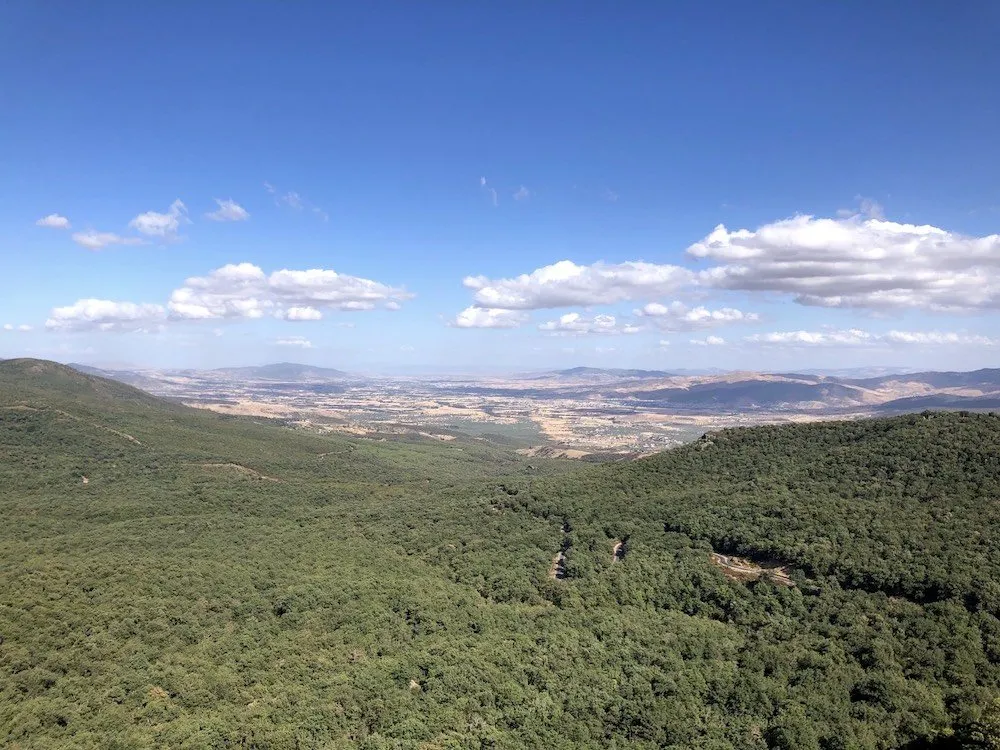
Stretching across the north and the west of the country, these mountains form a dramatic landscape of forested hills, rocky peaks, waterfalls, and traditional Berber villages. They offer not only breathtaking scenery but also opportunities for hiking, adventure, and cultural immersion.
The Tunisian Dorsal is the eastern extension of the Atlas Mountains, cutting across northern Tunisia from the Algerian border toward the Cape Bon peninsula. It acts as a natural barrier between the humid north and the drier interior.
Highlights: This region includes impressive peaks and lush landscapes, particularly around Le Kef and Kasserine. It is home to Jebel Serj, a favorite among hikers and spelunkers due to its caves and panoramic views.
Jebel ech Chambi, standing at 1,544 meters above sea level, is Tunisia’s highest mountain. Located near the city of Kasserine in central-west Tunisia, it is part of the Dorsal range and is protected as a national park.
Highlights: The Chambi National Park is known for its diverse flora and fauna, including gazelles, wild boars, and rare birds. The park is also rich in pine forests and endemic plant species. Hiking trails lead to the summit, offering expansive views of the surrounding landscapes.
Located near the Algerian border in northwestern Tunisia, the Kroumirie region features some of the country’s most beautiful and untouched forests.
Highlights: Dense cork oak and pine forests cover the hills, and the region receives the highest rainfall in Tunisia, supporting a rich biodiversity. The picturesque town of Aïn Draham, perched on the slopes, is known for its red-tiled houses, cool climate, and popularity as a summer retreat. Nearby Tabarka provides access to coastal trails and mountainous hinterland.
In southern Tunisia, the Matmata Mountains form a stark and surreal landscape of dry hills and eroded valleys. This region is famous for its underground Berber dwellings.
Highlights: The town of Matmata is known for traditional troglodyte houses, carved into the rock to escape the desert heat. These unique homes attracted global attention when used as filming locations in Star Wars. The area offers a blend of cultural interest and mountain desert trekking.
Located in northern-central Tunisia, these mountain ranges are smaller but culturally significant.
Zaghouan Mountain: Famous for the Temple of Water, built by the Romans to mark the source of the aqueduct that supplied water to ancient Carthage. The Jebel Zaghouan area is great for hiking and overlooks olive groves and historic ruins.
Teboursouk Region: Home to Dougga, a UNESCO World Heritage Site, one of the best-preserved Roman towns in North Africa, nestled on a hillside.
Diverse Landscapes: From dense forests and green valleys in the north to arid peaks and rocky deserts in the south.
Cultural Encounters: Many mountain regions are inhabited by Amazigh (Berber) communities who preserve ancient traditions, language, and crafts.
Outdoor Adventures: Tunisia’s mountains offer hiking, bird watching, mountain biking, caving, and wildlife exploration.
Climate Refuge: In summer, mountain towns like Aïn Draham and Kesra offer cooler temperatures and fresh air.
Spring (March–May) and Autumn (September–November) are ideal for mountain exploration due to mild temperatures and blooming landscapes.
Winter brings snowfall to higher elevations, especially around Aïn Draham, offering a rare Tunisian snow experience.
Tunisia’s mountains remain an underexplored treasure, ideal for travelers looking to go beyond the beach. Whether you're trekking through pine forests, discovering hidden waterfalls, or standing among ancient ruins on a mountain slope, Tunisia’s highlands promise both adventure and serenity.